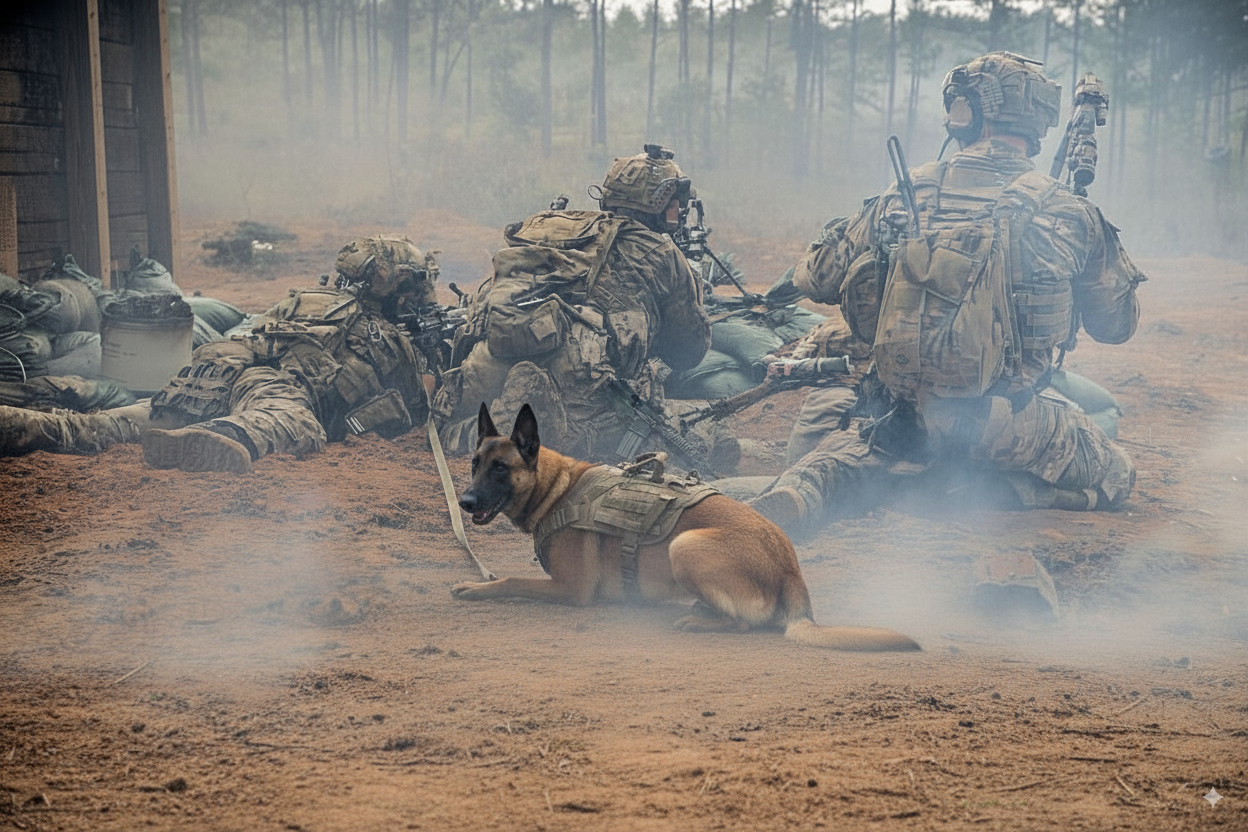Advanced Techniques to Evade Detection Dogs
In modern warfare, stealth equals survival. Soldiers hide in terrain, lower noise, mask traces. Yet one weakness remains: scent.
Dogs detect what humans miss. A molecule betrays. Sweat, breath, residue—mission lost.
Olfactory camouflage is not optional. It is essential. Here we explore the science, the tools, and the tactics that make it possible.
The science of canine scent
Built for smell
A dog’s nose is a weapon system. Three hundred million receptors. Humans hold five million.
The olfactory bulb, huge, processes chemicals with high resolution.
Airflow divides. One path for air, one for scent. Breathing never stops detection.
Jacobson’s organ
Dogs carry an extra detector: the vomeronasal organ, Jacobson’s organ. It senses signals invisible to humans. Pheromones, subtle cues. A second channel. Twice the power.
Training
Dogs sniff with discipline. Training teaches targets: drugs, explosives, humans.
Modern olfactory camouflage
Chemical neutralizers
Inhibitors act on the molecule itself.
-
Cyclodextrins: ring cages; they trap odor compounds.
-
Neutralizing polymers: barriers; they stop release.
-
Enzymes: catalysts; they break molecules down.
Physical absorbers
Absorbers capture before spread.
-
Activated charcoal: versatile; traps wide ranges.
-
Absorbent gels: portable; retain moisture and scent.
-
Nanoparticles: advanced; bind maximum volume.
Layered defense
Stacking builds strength.
Clothing with nanoparticles. Enzyme spray applied. Absorbent pouches carried.
Together they cut signature close to zero.
Nature’s examples
Animals that hide with scent
Caterpillars mimic plant odor. Predators ignore them.
Skunks flood the air. Other signals vanish.
Parasitic ants copy colony smell. Guards accept them.
Engineers watch, learn, adapt. Biomimicry fuels design.
Challenges
No method perfect.
Humidity, wind, heat reduce strength. Materials expire. Costs rise.
Dogs evolve. Training sharpens senses. Adaptation never stops.
It is a race. Technology runs. Dogs chase.
FAQ on olfactory camouflage
What’s the difference between inhibitors and absorbers?
Inhibitors change molecules. Absorbers capture them. Used together, they build the strongest defense.
Where do absorbers work best?
Dry, temperate zones. In humidity, they saturate. Pair them with inhibitors.
How to maintain the gear?
Charcoal recharged with heat. Gels replaced when full. Nanoparticle fabrics washed with care.
Do dogs adapt?
Yes. Training never ends. Dogs learn to counter new barriers. Camouflage is temporary.
Natural alternatives?
Essential oils help briefly. Against trained dogs, they fail.
Conclusion
Battlefields stretch beyond sound and sight. They now include air itself.
Olfactory camouflage, still young, grows vital. Inhibitors, absorbers, nanotech, biomimicry—lines converge.
The aim is clear: soldiers without scent.
Stealth once meant silence or shadow. Today, it means control of molecules.
Best regards,
The Nutsof Team
Advanced Camouflage & Defense Solutions
🌐 www.nutsof.com
Follow us on Facebook and Instagram for the latest in advanced military camouflage technologies.


